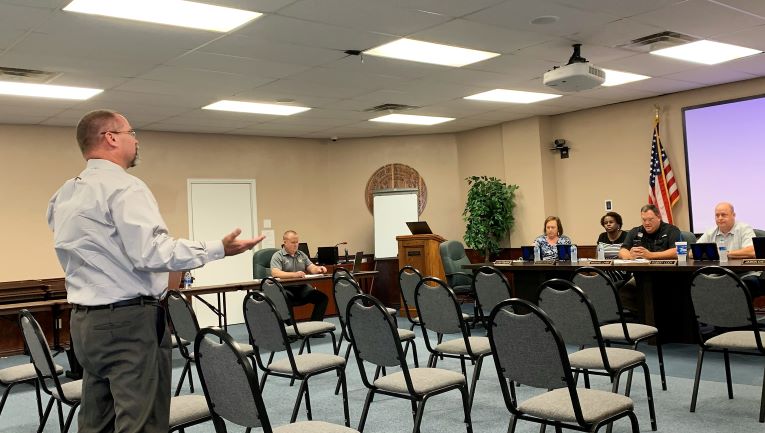It’s no secret school finance is a complicated animal, with many different factors affecting funding, including how high Sulphur Springs ISD and other school districts may set the ad valorem rate. Lucas Janda with Live Oak Public Finance LLC discussed with SSISD Board of Trustees the “current tax practices” aspect of school finance, specifically the state’s values versus appraisal district values in Texas.

“The state for years has always had one big picture, that the higher your property values are, the less amount of state aid they have to give you. That’s been the system they’ve had forever. With House Bill 3, nothing has really changed,” Janda told the board. “Let’s think about that for a second. Values keep getting higher and higher, and the state has to give less and less. Is that on the chief appraisers? Who is really responsible for that?”
The state does a sample of values in every county, with business or tax officials selecting the home or business properties to appraise. The state then gives an estimate of what they think they are worth and determine estimates for counties based on those appraisals. The appraisal rates set by the county’s chief appraiser then is expected to be within 5 percent of the state estimate, either at 95 or 105 percent of the range, for the “state to bless your school districts,” Janda reported.
He said, currently, the state continues to put pressure on chief appraisers for the 254 counties in Texas toward appraisals with higher property values annually. Those appraisers that do not set appraisals within that 5 percent range estimated by the state are given three years to get values up to the level indicated. When they don’t, Janda said, schools are hurt, receiving less and less state aid each year, and there could be repercussions for the chief appraiser, including potentially losing their job, Janda reported.
“We’d have to run numbers to tell you exactly what that means, but for districts in the 4,000-plus enrollment range, I’d venture to say that’s going to be hundreds of thousands and potentially even closer to a million dollars of that kind of loss in state aid,” Janda told the SSISD Board of Trustees during their June 15 meeting. “It’s obviously put in front of you, your superintendent, CFO; everybody’s got eyes on this and you have no control over anything. This is all between the state of Texas and what they think you values are the chief appraiser trying to keep up and ultimately not being at the threshold that the state’s expecting.”
Janda said the percentage that counties or schools are off can be found on a state website. The first year a district is in the “grace period,” the appraisal is typically in the lower lower 90 percentages compared to the state appraisals.
In the past, districts have benefitted from higher tax values. However, recent years’ legislation has capped the amount districts may set their maintenance and operating tax rate at. Now, when appraisal rates go up, districts are required to reduce their M&O tax rates, per HB 3.
“They’re probably doing their best to get values where they think is fair, but when the state says this is what they think it should be, now it’s fair plus premium,” Janda said.





